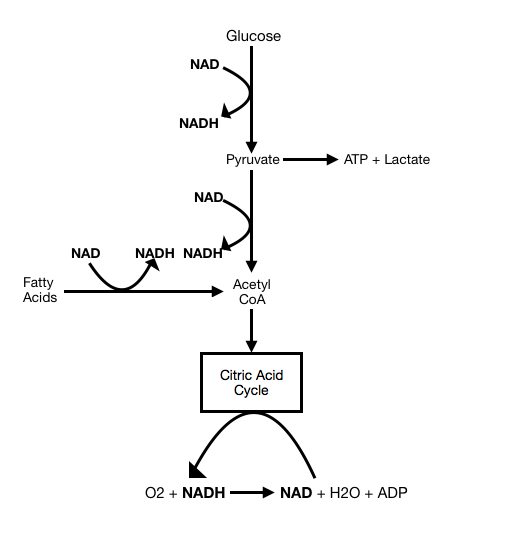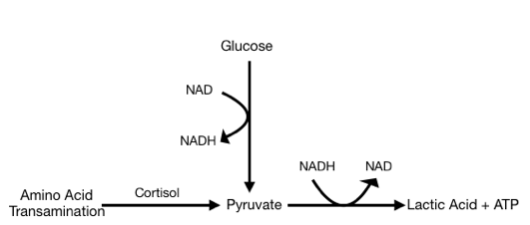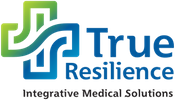Ozone & Ultraviolet Blood Irradiation
There are a number of chronic problems that people are living with which medicine doesn’t have great answers for. These include chronic infections due to microbial drug resistance and impaired immune systems, cardio-metabolic disease (insulin resistance, diabetes, mitochondrial dysfunction etc), autoimmune diseases, and malignancies. Luckily, we have alternatives to conventional medicine that work with nature to improve health overall at a fundamental metabolic level.
What are Ozone & Blood Irradiation Therapies?
Ozone Therapy
Ozone is a gas that is produced when sufficient energy hits an oxygen molecule, and splits it into two single, highly reactive oxygen molecules. Some of these find a more stable state as ozone, a tri-atomic oxygen molecule, or O3. When ozone interacts with blood, it rapidly breaks down and forms many different ozonides (proteins and lipids that have interacted with ozone).
Ultraviolet Blood Irradiation
Ultraviolet light is named because it is made up of a wavelength of light that is to the left of the spectrum (higher energy) than violet light, which has the lowest wavelength on the spectrum of visible light. UV is one of the wavelengths of light that is found in sunlight, and is partially responsible for the feelings of euphoria (increased serotonin production) and wellbeing that sunlight can provide. Originally called heliotherapy, sunlight has been used for healing as early as medicine has been written about.
How Ozone Therapy & Ultraviolet Blood Irradiation Can Improve Your Health
Ozone Therapy | Ultraviolet Blood Irradiation | |
|---|---|---|
NAD Regeneration | ||
Tissue Perfusion & Oxygenation | ||
Enhancement of Antioxidant Systems | ||
Modulation of Immune Function | ||
Direct Antimicrobial Function |
NAD Regeneration
NAD Synthesis & Functions in the Body


NAD is an acronym for nicotinamide adenine dinucleotide, and it is synthesize from dietary sources of tryptophan using vitamin B3 (aka niacin) as a nutrient cofactor. NAD is used during mitochondrial metabolism of sugars and fats to capture the energy that is liberated during the metabolism of these sugars and fats.
NAD is the rate limiting component in DNA replication and protein synthesis. This basically means that all cell functions and cell division are dependent upon NAD levels. NAD is also the rate limiting component in all cellular repair mechanisms, including DNA and RNA repair. So low levels of NAD allow DNA mutations which can lead to dysfunction, disease, and aging. This is why NAD IVs, patches, and supplements are currently being marketed for treating conditions from neurodegenerative diseases to conditions associated with aging.
There are a few different ways that the body’s pool of NAD can be increased, and the NAD:NADH ratio balanced. If this doesn’t happen, then mitochondria slow down and aerobic capacity decreases.
The first is the most natural, the mitochondria use oxygen and other cofactors to use the energy stored in NADH to create ATP.
We can also supply the body with more exogenous NAD. This can be done by supplementing with the above nutrients that are necessary for its synthesis (as noted above) or supply the body with NAD. The latter cannot be done through oral dosing because NAD is broken down by digestive secretions and metabolized by the liver. Either intramuscular injection or intravenous administration are the way can be used to increase NAD levels in the body. The problem with this method is that higher doses can be uncomfortable (flushing, pressure in the chest, light headedness) if not administered slowly (over 4-8 hours depending on the dose).
The next is the use of the PMOR system, which creates free radicals out of extracellular minerals. This is bad because these free radicals damage extracellular components.
The fourth can be seen to the Right ->. In the absence of oxygen, the body can use cortisol (the stress hormone) to break down protein (the biggest reservoir of which in the body is skeletal muscle tissue) into pyruvate. This conversion of pyruvate into lactic acid regenerates NAD and creates energy in the form of ATP, but it also acidifies tissues. This is part of the reason that muscle soreness happens after anaerobic exercise. Creating energy in this inefficient way can cause lactic acid to build up in tissues, creating metabolic acidosis.
The last way that NAD can be regenerated is through oxidation by ozonides via the following formula: Ozonide + NADH —> NAD + O2.
Tissue Perfusion & Oxygenation
Improved Tissue Perfusion and Oxygenation: Ozone and Ultraviolet Light
Oxygen is an important molecule in the function of our bodies. If you don’t agree, try holding your breath. We as humans can live for weeks without water, and months without food, but permanent brain damage happens at around the 5 minute mark when deprived of oxygen. This is because our cells use oxygen to turn sugar and fat into energy, and cells use that energy to do everything.
The pentose phosphate pathway (AKA the HMP pathway) turns sugar into nucleotides for the production and maintenance of RNA and DNA respectively. The body also uses this pathway to produce 2,3 diphosphoglycerate (2,3 – DPG) which allows the oxygen that is bound to the hemoglobin molecule in red blood cells to dissociate and dissolve into the tissues more easily.
Ultraviolet light increases nitric oxide production, which dilates blood vessels. UV light also reduces LDL and VLDL cholesterol levels which can reduce atherosclerotic plaques in blood vessels. By making the surface of the red blood cells more pliable and less sticky, the treatment of blood with UV light decreases rouleax (stacking) formation and increases blood flow.
Enhancement of Antioxidant Systems
Enhancement of Antioxidant Systems: Ozone and Ultraviolet Light
Oxidation isn’t the enemy, oxidation is the process by which our body harnesses the energy found in sugars and fats and stores it in a usable form. The problem with oxidation is that it is catalytic and can cause the breakdown of cellular machinery if it is left unchecked. So shutting down oxidation isn’t the answer, turning on antioxidant systems is.
In fact we need oxidation to turn on our antioxidant systems. Just like a lot of other cellular processes, the enzymes that produce and regenerate antioxidants like glutathione, require mitochondrial function and oxidation in order to work.
Both ozone and ultraviolet light stimulate the action of antioxidant enzyme function, thereby regenerating the body’s pool of antioxidants.
Modulation of Immune Function
Modulating White Blood Cell Function: Ozone and Ultraviolet Light
When we use ozone to treat infections, its main effect isn’t in killing the microbes in our body. What it does do is improve the mitochondrial function of white blood cells, improving their ability to fight infection and produce cytokines.
If a white blood cell is overactive and producing too many inflammatory cytokines, it absorbs more UV light from the blood treatment and is neutralized. This stimulates the body to make new, fresh white blood cells that haven’t been educated to overact to allergens or body tissues. This is why people who have allergies and autoimmune disease are benefited by this treatment.
Conditions that O3UV (Ozone + Ultraviolet Blood Irradiation) can be used to treat include:
O3UV treatments are one of the most powerful anti-aging IVs that we currently have access to use in modern medicine. And it isn’t because we are giving the body something that it doesn’t have. We are applying high energy forms of oxygen and light to stimulate the natural healing. The two therapies are synergistic and mitigate some of each other’s potential side effects.
- Chronic Fatigue Syndrome
- Fibromyalgia
- Diabetes
- Aging
- All of the below issues
- All acute and chronic viral infections including Epstein Barr Virus (EBV), Shingles, Herpes
- Bladder Infections
- Septicemia (infection of the blood)
- Candida Overgrowth
- Parasitic Infections
- Pneumonia
- Asthma and Allergies
- Autoimmune Conditions: Rheumatoid Arthritis, Ulcerative Colitis, Sjogrens, Raynauds, Scleroderma
- Gut Issues: Irritable Bowel Syndrome, diverticulitis, leaky gut, Crohn’s Disease
- Graft vs Host Disease, as an anti-transplant tissue rejection treatment
- Myasthenia Gravis, Guiallan-Barre Syndrome, Chronic Inflammatory Demyelinating Polyneuropathy
- Congestive Heart Failure
- Atherosclerosis
- Erectile Dysfunction
- Diabetic Neuropathy
- Non Healing Wounds
- Alzheimer’s Dementia and Cognitive Impairment
- “Leaky Brain”, Brain Fog
- Parkinson’s Disease
- Post Concussion Syndrome
- Inflammatory Neurological Disorders: MS, CIDP, Guillain-Barre syndrome, Epilepsy,
- Chronic Post Traumatic Pain Syndromes

FAQ
Q: How many treatments do I need?
A: Clinically, we have seen that chronic inflammatory conditions (allergies, asthma, autoimmune disease, chronic fatigue) respond the best to an initial course of 10 O3UV treatments.
Ideally this is a curative treatment and doesn’t necessarily need to be used indefinitely, though it safely can be. At a certain point the body decompensated which put you in the chronic condition that you are in. By providing energized oxygen and light, we stimulate the healing power of the body to move itself towards homeostasis. Because it is a treatment that is supportive to the body’s functioning, it can be used to improve physical and mental performance on a regular basis. And because O3UV therapy addresses the cellular processes that manifest in aging, it can and probably should be used indefinitely.
Q: Are there any contraindications?
A: Porphyria (a genetic blood disease), photosensitivity, states of increased bleeding (either genetic hemophilia or use of high doses of anticoagulants), hyperthyroidism, subacute appendicitis and cholecystitis, immediately after a myocardial infarction (heart attack).
Q: Sun exposure causes skin cancer, how is this any different?
